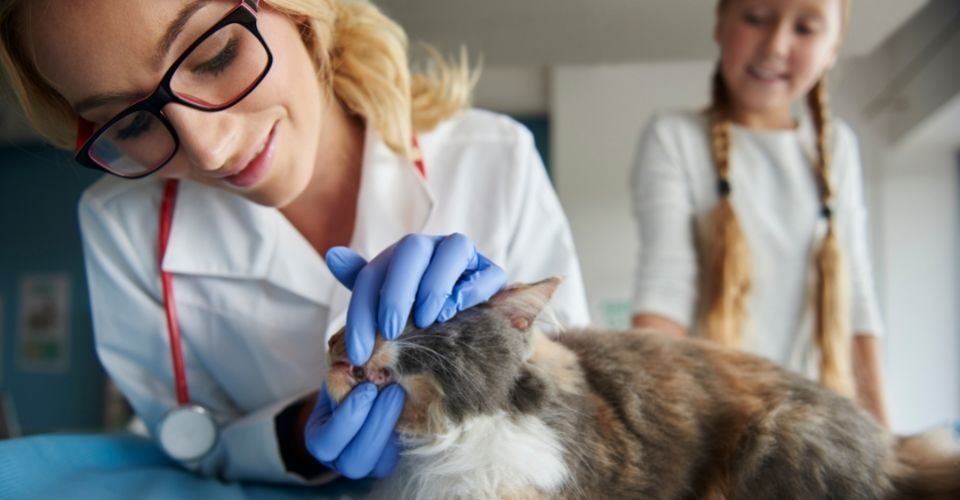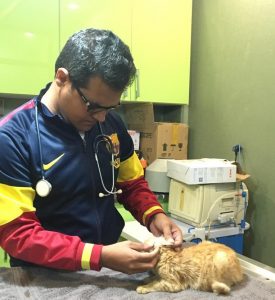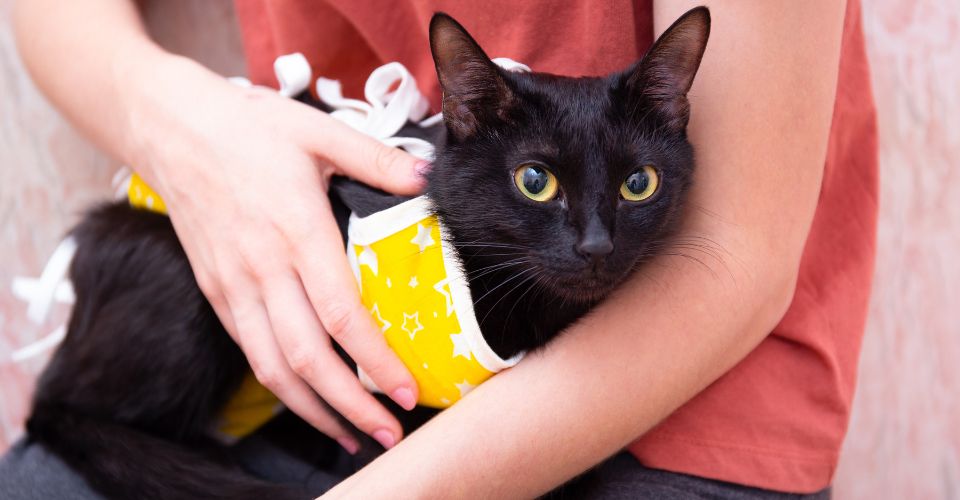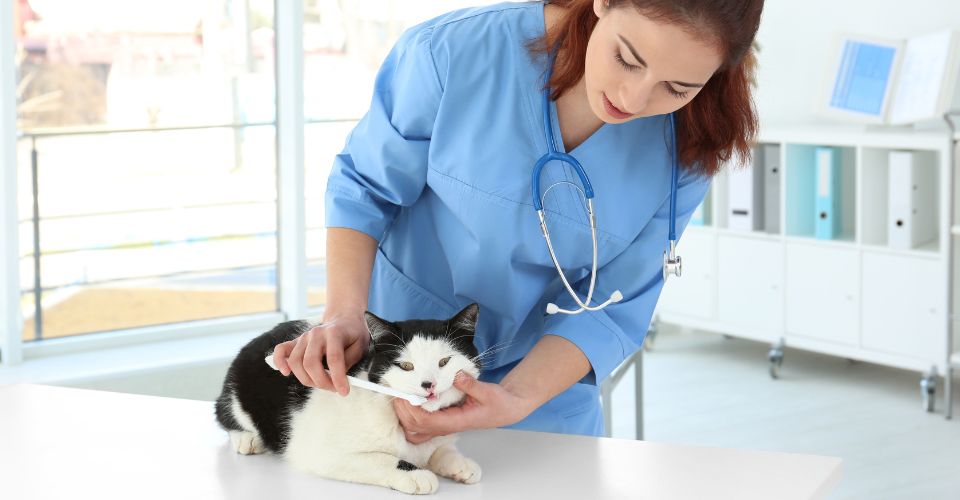Has your cat been coughing and sneezing? Does she have a fever and acting lethargic? Is there any nasal or ocular discharge on your kitty’s face? Most probably, it’s the cat cold making your cat cough and sneeze. This cat cold is known as upper respiratory infection in cats.
Feline upper respiratory infection (URI), also known as feline infectious respiratory disease and feline upper respiratory disease complex (URD), is common in cats and is quite similar to the common cold in humans. Upper respiratory infection in cats is rarely fatal and often recover on its own with supportive care. However, in extreme cases, it may lead to the development of pneumonia and other issues.
Causes of Upper Respiratory Infection in Cats
According to WebMD, viral and bacterial agents capable of causing feline diseases are responsible for causing upper respiratory infection in cats—80 to 90 percent of these infections are viral and the rest are bacterial. Following are some of the most common viruses responsible for causing cat cold:
Viral Causative Agents
Together Feline Herpesvirus and Feline Calicivirus are responsible for around 90 percent of the upper respiratory infection in cats.
- Feline Herpesvirus Type-1, also known as feline viral rhinotracheitis (FVR), is one of the major viral causative agents of URI in cats. This notorious virus is related to the viruses that are responsible for causing chickenpox and cold sores in people. However, there is no need to worry as it is not transmitted from cats to humans.
- Feline Calicivirus (FCV) is another viral agent responsible for causing feline respiratory infection and other oral issues in cats. This virus is highly contagious and is easily transmitted from the infected cat to healthy but unvaccinated cats on coming in contact. However, it cannot be transferred to humans.
Bacterial Causative Agents
The most common bacterial causative agents of feline respiratory infection in cats are Bordetella bronchiseptica and Chlamydophila felis.
- Bordetella bronchiseptica is considered a primary pathogen of domestic cats and is responsible for causing URI in cats—by colonizing their respiratory tracts. Cats living in overcrowded settings are more susceptible to this bacterium. However, it is more common in the canine world.
- Chlamydophila felis is not only responsible for causing respiratory problems in felines but also chronic conjunctivitis—it is responsible for around 30 percent of cases of chronic feline conjunctivitis.
Fungal Causative Agents
Several species of fungi can cause upper respiratory infection in cats. Our cats catch these fungal agents when exposed to bird droppings and decaying plants in gardens.
- Cryptococcus neoforman is the most common fungal cause of feline respiratory infection. Our cats contract this fungi by inhaling. They start infesting the nasal cavity, and in some cases spread to other parts of the cat body—the lower respiratory system and often in the nervous system. According to the Cornell Feline Health Center, around 4 percent of the cat population are its asymptomatic carriers—they have fungal spores without any symptoms of the infection. Compared to dogs, cats are six times more prone to developing the infection if the spores enter their body.
Upper Respiratory Infection in Cats Symptoms
Different cats may exhibit different symptoms depending on the causative agent and location of the infection, but below are some of the most common causes of feline respiratory infection.
- Persistent coughing and sneezing
- Nasal congestion
- Runny nose
- Drooling
- Ocular and nasal discharge—clear or maybe purulent
- Conjunctivitis (pink eye)
- Squinting and pawing at eyes
- Fever
- Little to no eating
- Difficulty breathing
- Lethargy
- Changed voice
Upper Respiratory Infection in Cats: Risk Factors
While cats living in overcrowded places such as shelters, breeding facilities, and multi-cat households are more prone to developing feline respiratory infections, there are many other factors at play.
Vaccinated or Un-vaccinated
Vaccination against FHV and FCV is very effective in keeping viral infections at bay. So if your cat has received her annual vaccination shots, the chances of developing feline respiratory infections are diametrically reduced. The vaccine is highly effective but is not 100 percent effective so your vaccinated cat may still develop a mild illness, which will most probably go away on its own, without any treatment.
Overall Health
Cats with weak immune systems are more vulnerable to the development of upper respiratory infection. Cats suffering from feline leukemia have a very weak immune system, and therefore, are more prone to get infected. Similarly, cats taking medicines that suppress their immune systems are also at a greater risk.
Cat Breed
Certain cat breeds—Persian and other cats with flat faces—are at a greater risk of developing an upper respiratory infection. These breeds are generally at a greater risk of developing respiratory problems.
Outside or Indoor Cat
As compared to indoor cats, outdoor cats are more susceptible to developing an upper tract respiratory infection. They can catch causative agents from the decaying plants as well as other carrier cats.
Age
Young and senior cats are at a greater risk of developing URI as they have weak immune systems.
Upper Respiratory Infection in Cats: How Long Does it Last?
After coming in contact with the causative agents, cats do not develop symptoms immediately. Instead, they go through a 2 to 10 days incubation period. Depending on the causative agent, the infection can last from 7 to 10 days.
Cats who contact FVR become its chronic carriers for a lifetime—spreading it to other susceptible cats. The threat of the reactivation of the virus in carrier cats looms throughout their lives, resurfacing when they are under stress or develop other illnesses. Contrary to FVR, only half of the FCV-infected cats become carriers. Sometimes, they only remain carriers for a month or two. But some cats remain carriers for a lifetime. These carrier cats do not develop symptoms but are still a walking source of the causative agents—transmitting it to cats they interact with.
How to Treat Upper Respiratory Infection in Cats
The treatment will depend on the severity of the infection. As mentioned in the beginning, cat cold is rarely fatal. If your cat is healthy overall, the upper respiratory infection will go away on its own after running its course. If the infection is uncomplicated, you can treat your cats symptomatically at home. If there is an eye discharge, the vet may prescribe an eye ointment.
However, if your cat has been sneezing continuously, has other symptoms discussed above, or worsening with time, you should contact your vet. The vet will suggest the best course of treatment for upper respiratory infection in your cat.
If the infection was caused by bacterial agents, the vet would prescribe specific antibiotics. If some viral agent is the culprit, the vet may still prescribe some antibiotics. These antibiotics do not really work against viral agents but effectively keep secondary bacterial infections from making the condition worse.
Treating Upper Respiratory Infection in Cats at Home
As discussed above, URI in cats is rarely fatal. You do not have to worry much and rush to the vet in a panic if your cat has been coughing and sneezing. Instead, you should calm yourself and provide supportive care to your fluff ball.
You should provide your cat a comfortable place to rest and encourage her to eat. If she seems uninterested in food, you can tempt her by offering store-bought mushrooms, watermelon, bacon, spinach, or avocado. While sharing these human foods with your cat, you should keep in mind “moderation is the key.” If this does not work, the vet may prescribe an appetite stimulant.
If your cat has been experiencing difficulty breathing—due to congestion in its airway—your vet will suggest you take your cat to the bathroom with a steamy shower running for around 10 to 15 minutes. If there is excessive discharge from the eye and nose, you should wipe it carefully with a tissue.
Apple Cider Vinegar for Upper Respiratory Infection in Cats
Apple cider vinegar is one of the most widely used food supplements, as it is believed to help cats fight feline respiratory infection. But it is not the case. It is advised that cat owners should never apply apple cider vinegar to their cat’s nose, throat, or eyes. Before trying any home remedy, you should always first run it by your vet.
What if Upper Respiratory Infection in Cats is Left Untreated?
No doubt, upper respiratory infection in cats is rarely fatal, but it does not mean that you can be careless about it. You do not only have to provide supportive care to your cat but also need to be extra observant of her. If she is not eating and drinking, you will have to take her to the vet. If the situation is not getting any better with passing time, you should take her to the vet.
If left untreated, the feline upper respiratory infection could lead to the development of serious feline diseases, such as pneumonia, chronic breathing issues, and blindness.
How to Prevent Upper Respiratory Infection in Your Cat?
Seeing your feline friend in discomfort is painful, so responsible cat owners look for ways to prevent their cats from catching and developing infectious feline diseases, such as feline upper respiratory infection. Here’s how you can reduce the risk of upper respiratory infection in cats:
Get Your Cat Vaccinated
Vaccinations against FHV and FCV are not 100 percent effective, but they diametrically reduce the risk and severity of upper respiratory infection in cats. Depending on your cat’s overall health, the vet may recommend the inoculation of vaccines for Bordetella bronchiseptica and Chlamydophila felis. For your cat to have a strong defense against these causative agents, the vaccinations need to be boosted after regular intervals—every one to three years.
Containing the Contagion
Feline upper respiratory infection is highly contagious in cats. Infected cats are actively transmitting the causative agents to other susceptible cats that they may come in contact with. The virus is found in the body fluids of the infected cats—tears, eyes, and nasal discharge, and saliva. The virus easily spread to nearby cats when they cough and sneeze on each other. The virus can also spread to other cats if they have been drinking and eating from common bowls and using the same litter box. Cat owners can also spread the virus from their infected cat to others if they do not wash their hands properly between handling several cats.
Therefore, it is strongly advised that cats with upper respiratory infections must be isolated in multi-cat households—they should be given separate bowls for drinking and eating and should also have access to separate litter boxes. If you are bringing a new cat to your home, you should keep her in isolation for a week or two to ensure that it does not spread the virus to your other healthy cats. You should also take your new cat to the vet for a full body checkup and vaccination.
Is Upper Respiratory Infection in Cats Contagious to Humans?
Did your cat just sneeze or cough on you? Are you worried about catching the infection from your cat? Well, fret not. Feline respiratory infection is only endemic in cats—it is not transmitted from cats to humans. However, you should be careful while dealing with an infected cat as you can transfer the causative agents from your sick cat to the healthy one.
After learning about upper respiratory infections in cats, you may be interested in reading about cat ear infections or cat eye infections.






